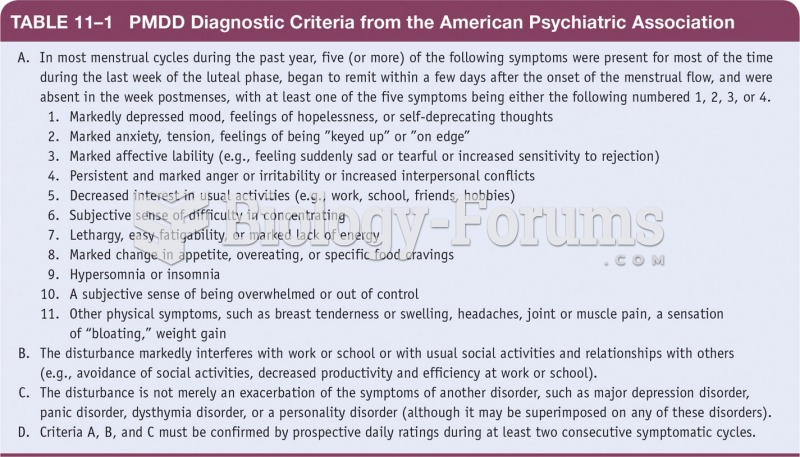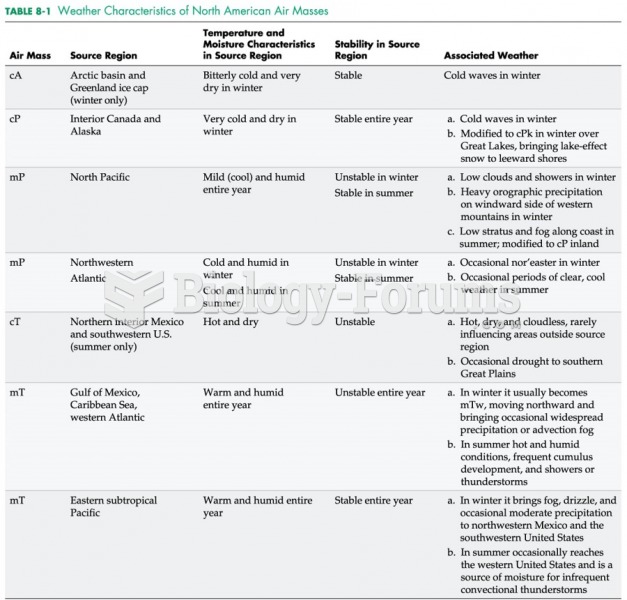|
|
|
IgA antibodies protect body surfaces exposed to outside foreign substances. IgG antibodies are found in all body fluids. IgM antibodies are the first type of antibody made in response to an infection. IgE antibody levels are often high in people with allergies. IgD antibodies are found in tissues lining the abdomen and chest.
Fatal fungal infections may be able to resist newer antifungal drugs. Globally, fungal infections are often fatal due to the lack of access to multiple antifungals, which may be required to be utilized in combination. Single antifungals may not be enough to stop a fungal infection from causing the death of a patient.
If all the neurons in the human body were lined up, they would stretch more than 600 miles.
Between 1999 and 2012, American adults with high total cholesterol decreased from 18.3% to 12.9%
The first oral chemotherapy drug for colon cancer was approved by FDA in 2001.






